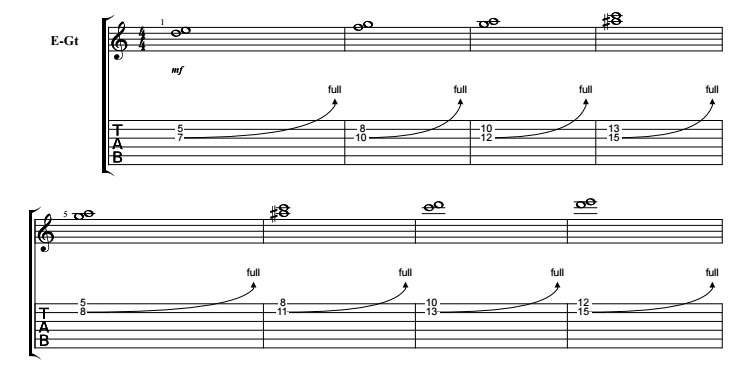Learning how to play blues guitar? Pay extra attention to these five things from guitar teacher Mike B.…
If you’re a blues guitar player, or want to learn how to play the blues, then you’ll want to read this post.
In it we’re going to reveal 5 secrets that will help make you a better blues guitar player. So let’s get started!
How Do You Play Blues?
Here are a few tips for playing blues:
- Learn the basic 12-bar blues chord progression
- Master the tonic chords of E, A, and D
- Experiment with different chord voicings and embellishments
- Learn how to do a solo over a blues backing track
- Improvise short phrases with the pentatonic scale
Of course, the best way to learn how to play the blues is to sign up for blues guitar lessons with a talented teacher! You’ll learn everything you need to know about playing blues guitar, including the tips you see in the video below:
https://www.youtube.com/watch?v=WfZ64yEGPok
Top Blues Guitar Player Secrets
Blues music has its roots in the Deep South of the United States, and it has been influential in the development of many other genres of music, including rock and roll, jazz, and country. The blues is characterized by a mournful or melancholic tone, and it often makes use of blues scales and blue notes.
Blues guitar is a distinctive style of playing that makes use of both standard chord progressions and soloing techniques. If you’re interested in learning how to play blues guitar, here are a few tips to get you started.
1. In Tune Bends
If you want to learn how to play the blues on guitar, you’ve got to learn in tune bends.
The blues guitar style is full of bending strings. Bends, as well as hammer-ons, pull-offs and slides, give guitarists the ability to imitate the way singers use various inflections while singing melodies. However, unlike hammers-ons and slides, bends are not guaranteed to be in tune. Since there is nothing worse than an out-of-tune bend in the climax of a great solo, we need to pay special attention to training ourselves to make sure our bends are in tune.
When you bend a string, it is supposed to be bent up to a specific pitch. The most common bends are up a whole step (the distance of two frets), or up a half step (the distance of one fret). For example, if you are on the 8th fret of the B string (the note is a G), and you bend up a whole step, it should sound like the 10th fret of the B string (the note is an A). If you are going to bend up a half step from the 8th fret on the B string, you bend it up to make it sound like the 9th fret (the note is an Ab or G#). Here are a few ways to practice being in tune:
- Play the note you are going to bend to first, get the sound of the note in your ear, then bend up to it, and try to get it to be the same exact note.
- Plug in to a tuner, and practice bending from one in-tune note to another, either a half step or a whole step away.
- Practice unison bends. Unison bends involve playing two notes, the note you are bending and the note you are bending to, on two adjacent strings. When doing this, take special care, and make sure that they are exactly the same two notes. To get started, practice the examples below:

Be sure to practice this all over the neck of your guitar, since it will take different amounts of strength to bend in tune in various parts of the neck. We want to train our muscles and our ears to be in tune no matter where we are on the neck.
2. Learn Entire Solos
To learn to play blues guitar, you’ve got to learn entire solos. A lot of players tend to overlook this aspect of learning, and just end up digging into individual licks they enjoy. The importance of having a lot of licks and ideas available to you cannot be overstated, but there is a lot to be gained from learning the entirety of a solo.
Learning an entire solo gives you a chance to see how the soloist paced themselves, and how they built their solo from the beginning to the end. It also gives you a chance to see how the soloist utilized space. When we look at just individual licks, we don’t get to see what led up to them, and what came after them. It’s these aspects of a solo that really make you stand out from the rest.
3. Serve the Song
Typically, a solo should serve the song it is within, and should be viewed as your turn to speak and convey how you feel. What you choose to say in your playing should serve the song in some way. For example, if its a slow song, it may not be the time to unleash your fastest licks, back-to-back. In other instances, a song may need all of your fastest licks. Keep your ears open, and think about what it is that you are trying to express. Does it add to the song, or are you simply letting your fingers speak? Don’t forget that the song has a melody. You can quote it in your solos, or simply just use the rhythm of the melody to relate your idea back to the melody. Leave space. Sing along with your playing.
4. Repetition
Repetition can be viewed in a few ways: repeating your idea verbatim, repeating the rhythm but changing the notes, or playing variations on your original idea and allowing them to morph into new ideas.
This is such a crucial tool for crafting a good solo. If we think about it, do lyrics typically have a bunch of unrelated ideas through the duration of the song, or are the lyrics all along a central theme? Typically we will find the lyrics are all around one idea, but when a lot of people go to take a solo, they tend to play a bunch of unrelated ideas stringing them together one after another. Sometimes it works; a lot of times it doesn’t. Wouldn’t it make more sense if instead of playing 100 ideas or guitar licks in a solo, we played three or four, and got as much out of them as we could?
Here are some ideas on how to practice this:
5. Listen to the Greats
This probably doesn’t need to be said, but always be listening to guitar players (and other instrumentalists) who you enjoy, and learn from them. If you haven’t already, you’ve got to check out these great blues guitar players:
- B.B. King
- Freddie King
- Albert King
- Stevie Ray Vaughan
- Everyone that ever played in the Allman Brothers Band
- Eric Clapton
- Mike Bloomfield
- Muddy Waters
- Robert Johnson
- Robben Ford
- Larry Carlton
- Charlie Christian
- Tinsley Ellis
- Albert Collins
How Do I Start Playing Blues Guitar?
To be a top blues guitar player, you need to have passion, soul and feeling. You also need to use the right techniques. The following are some secrets that will help you play like a pro.
First, it’s important to use the right picking hand techniques. For instance, you should use the thumb and first two fingers to pluck the strings.
This will give you a clear and consistent sound. You should also try using different picking patterns. This will add interest and variety to your playing.
Another secret is to use the right fretting hand techniques. For example, you should place your index finger behind the fifth fret when you play a note on the sixth string. This ensures that you get a clear tone. You should also try using different fingerings when you play chords. This will make your playing sound more professional.
It’s also important to use the right amount of distortion. Too much distortion will make your playing sound messy. On the other hand, too little distortion will make your playing sound dull. To get the perfect sound, experiment with different amounts of distortion until you find the sound that you’re looking for.
Finally, it’s important to practice regularly. The more you practice, the better you’ll get.
Is Blues Guitar Hard to Play?
There are many, many more tips worth mentioning, but this should get you started as you continue to learn blues guitar. Hopefully there are a few names here that you don’t yet know.
If you’re serious about learning blues guitar, these 5 secrets will help take your playing to the next level. Once you have mastered these concepts, there is no limit to what you can achieve on the guitar. Keep practicing and soon you’ll be sounding like a pro!

Mike B. teaches acoustic guitar, blues guitar, and guitar in Arcadia, CA. He received his Bachelor’s Degree in Guitar Performance from University of Redlands, as well as his Master’s Degree in Studio and Jazz Guitar from University of Southern California. Mike divides his time between performing live, doing recordings, and being an educator. He has been teaching students since 2004. Learn more about Mike B. here!
Photo by Soumyadeep Paul
Megan L.

